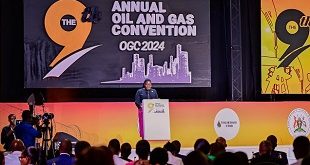
Recent hike means current tariff structure could end up killing industries
The cost of production in Uganda could soon rise as government continues to increase electricity tariffs amidst dwindling production due to low consumer demand.
Analysis by The Independent shows that the government has increased electricity tariffs by over 22% over the past three years, with domestic consumers whose usage is more than 15 units per month paying an average of Shs635.2 as at the end of 2016, up from Shs518.6 per KWh in 2014.
Commercial consumers such as welders and water pumps have seen their electricity tariff increased by 20.7% to Shs 570.6 per KWh while medium and large industrial consumers have seen their tariffs increased from an average of Shs450.1 and Shs308.5 per KWh in 2014 to Shs526.7 and Shs355.8 in 2016, respectively during the same period.
The sole national power distributor, UMEME – with approval of the Electricity Regulatory Authority (ERA), this year has again raised the electricity tariffs by up to 11% in the first quarter of 2017 citing depreciation of the shilling against the US dollar from Shs3, 375.45 in September to Shs3, 630.22 in December, 2016.
This signals a surge in operational costs in the country’s manufacturing sector, where the cost of electricity in proportion to the total operational costs currently accounts for 20-35 % in steel industry and slightly higher in the cement industry, according to executives in the manufacturing industry.
The officials say the continuous surge in electricity tariffs amidst cheap imports from China, Egypt and South Africa will make local business; especially those involved in manufacturing industry uncompetitive.
“If this situation continues, then, local companies which produce goods that are at the same time imported into the country cheaply are likely to become uncompetitive and possibly forced to shut down,” said Martin Kyeyune, the finance and economic advisor at Roofings Group, Uganda’s leading producer of steel products supplied across East Africa.
“The best thing at the moment is for the government to create a conducive environment for local firms to produce at full capacity and eventually drive the electricity tariffs downwards,” he said.
Statistics from the Uganda Manufactures Association show that the country’s overall industrial capacity utilisation currently stands at 53%, signaling that production capacity lies idle at majority of firms.
Gideon Badagawa, the executive director at the Private Sector Foundation Uganda (PSFU) adds that the government’s slow move to enforce a Local Content Policy explains the current surge in electricity tariffs.
But Vianney Mutyaba, a principal financial analyst at the ERA told The Independent that the set tariffs reflect the economic environment.
He said the tariffs approved by the regulator are normally set to ensure they are not very low to cause a disincentive for the electricity generation and not too high to hurt consumers, including manufacturers.
Mutyaba said the government no longer subsidises electricity consumption in the country as is the case in Tanzania and Rwanda which currently have the lowest tariffs in the East African Community.
 The Independent Uganda: You get the Truth we Pay the Price
The Independent Uganda: You get the Truth we Pay the Price


